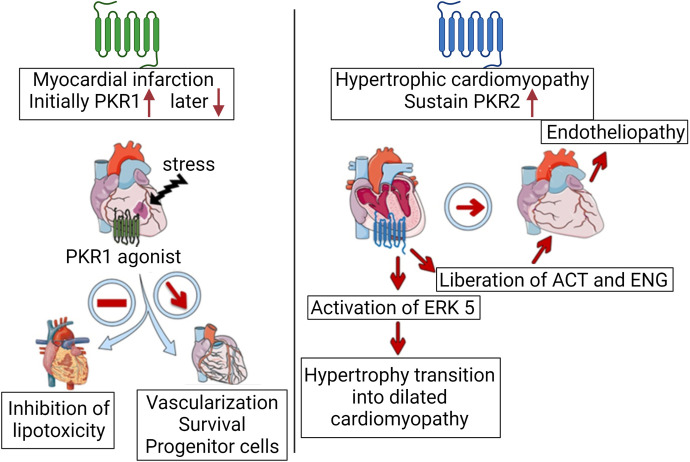Fig. 5.
Role of PKRs in cardiac diseases. Increase in PKR1 and PKR2 levels together with PK2 has been observed right after the myocardial infarction in mice as a compensatory mechanism. However, PKR1 levels rapidly declines, and PKR1 gene therapy or PKR1 agonist activates survival pathway, induced capillary network formation for better perfusion, activates epicardial progenitor cells, and inhibits pathologic development of lipotoxicity. In the hypertrophic cardiomyopathy mice model, sustained PKR2 levels are involved in the transition of the hypertrophy to dilated cardiomyopathy via activating extracellular signal-regulated kinase 5 (ERK5) signaling. It also promotes liberation of activin (ACT) and endoglin (ENG) from hypertrophic cardiomyocytes acting as paracrine factors to promote endotheliopathy. Created with BioRender.com.

